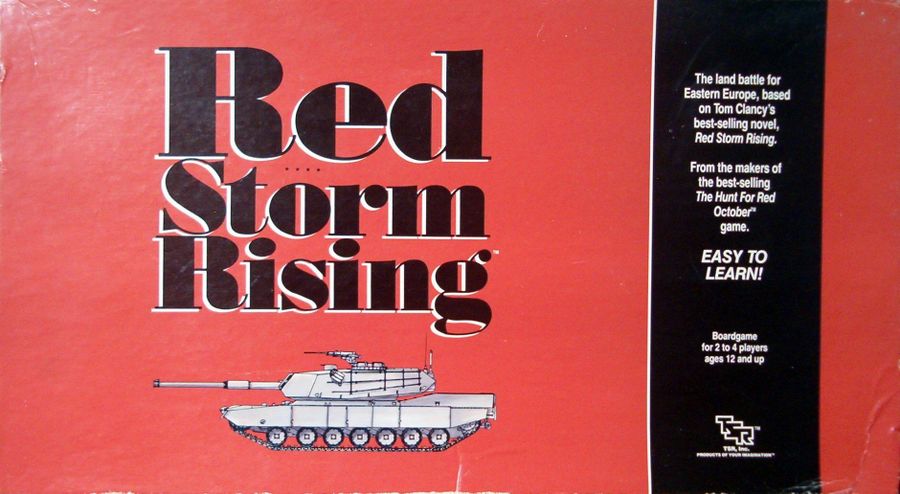Red Storm Rising is a board game based on the 1986 novel of the same name by Tom Clancy. The game was released in 1989 and is set in a fictional World War III scenario between NATO and the Warsaw Pact forces. The game captures the tension and strategic decisions that players must make to outmaneuver their opponents and secure victory.
Game Components of Red Storm Rising
Units and Counters: Representing military units with hidden attack values to maintain secrecy during gameplay.Board: Divided into areas such as woods, rough terrain, and rivers, each affecting movement and combat.Support Markers: Used to enhance attack rolls by allowing the best result of two dice rolls.Air Board: Introduced in the advanced game, splitting Central Europe into northern and southern sectors for air combat.Assets: Include artillery, armor, engineers, and chemical munitions, which can be added to units in the advanced game.Rule Books: Basic rules spanning 11 pages and advanced rules covering 19 pages.
How To Setup Red Storm Rising
Setup is fairly straightforward. Units are placed on the board with their attack values concealed from the opposing player. The NATO player must have at least one unit in every space adjacent to the Iron Curtain. The basic game setup resembles Stratego, with units placed so only the player can see their values. Rivers and terrain are marked on the board, influencing movement and combat dynamics.
Gameplay Mechanics and Game Objective
Combat Mechanics: Combat involves rolling a ten-sided dice; rolling equal to or below the unit’s attack number results in a hit or push back, determined by the defending player.Support Markers: Enhance attack rolls by allowing two dice rolls and taking the best result.Terrain Effects: Rivers reduce attack values, with minor rivers reducing by one and major rivers by two.Air Combat: Introduced in the advanced game, air units vie for superiority in designated sectors.Assets: Artillery and armor increase attack ratings, engineers facilitate river crossings, and chemical munitions boost attack values but incur penalties.Game Objective: The Soviet player aims to capture key NATO cities, while NATO must defend against the Soviet advance.
Player Experience
Red Storm Rising offers a blend of simplicity and depth. The basic game is light and luck-based, making it a great gateway for younger players or those new to wargaming. However, the advanced rules introduce more strategic elements, such as asset allocation and air combat, which significantly influence the game’s outcome.
Pros
Gateway to Wargaming: The basic game is an excellent introduction for new players due to its simplicity and thematic appeal.Balanced Complexity: The advanced rules add a layer of strategy without overwhelming casual players.Thematic Engagement: The game’s setup and mechanics keep players engaged with the Cold War scenario.Awards and Recognition: Won the Origins Award for Best Modern-Day Boardgame of 1989 and Best Graphic Presentation of a Boardgame of 1989.
Cons
Luck-Heavy Basic Game: The outcome of the basic game is largely governed by dice rolls, reducing strategic depth.Setup Restrictions: The NATO player’s initial setup is constrained, limiting early game strategy.Component Quality: While the components were excellent for 1989, they may appear drab compared to modern standards.
Personal Thoughts on Red Storm Rising
Red Storm Rising is ideal for those looking for a light yet engaging wargame experience. It serves as a perfect introduction for younger players or those new to the genre, while the advanced rules provide enough complexity to keep experienced players interested. For those seeking deeper strategy, alternatives like VG’s *NATO: The Next War in Europe* might be more suitable. However, for a fun and thematic game that balances simplicity with strategic elements, Red Storm Rising is a great choice.
We are supported by our audience. When you purchase through links on our site, we may earn an affiliate commission, at no extra cost for you. Learn more.

